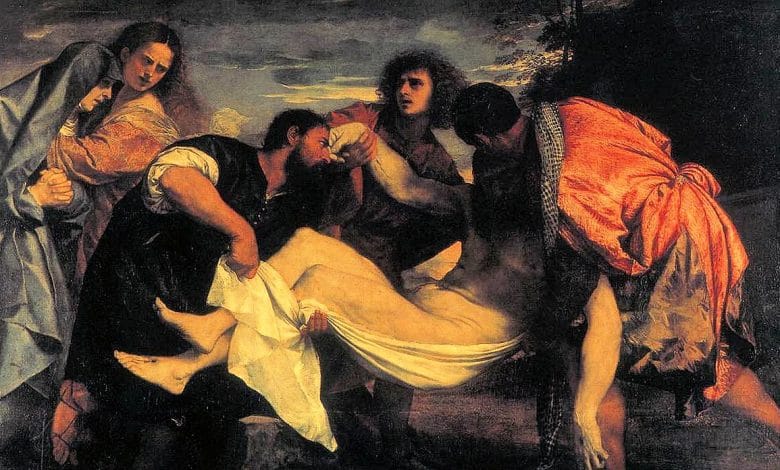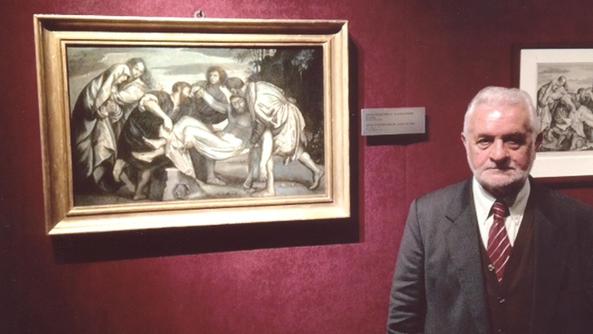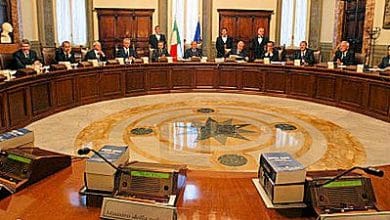
Francesco Rossini from Brescia, for thirty years he was a scientific informant, is a true art lover with keen eyes in evaluating and recognizing canvases of real value on the flea markets and in the junk of junk shops.
 The exhibition, of notable value, has been going on since the last part of last year. In the Imperial Stables of Prague Castle, in the Czech Republic, since last December 15, visitors can contemplate the sensual and enigmatic women painted by Titian called "Vanity".
The exhibition, of notable value, has been going on since the last part of last year. In the Imperial Stables of Prague Castle, in the Czech Republic, since last December 15, visitors can contemplate the sensual and enigmatic women painted by Titian called "Vanity".
These works are collected in an exhibition curated by Professor Lionello Puppi, undoubtedly one of the most profound connoisseurs of the work created by the artist in the course of his activity, and by Serena Baccaglini; the exhibition enjoys the patronage of the Italian Ministry of Cultural Heritage and Activities, the Italian Embassy in Prague and other bodies.
THE NEWS itself would not be fresh and will certainly not have escaped the most authentic fans of Renaissance art.
What leads us to talk about it, however, is another piece of news, unknown to the people of Brescia. Among the many paintings that crown the Vanitas by Titian, in the portrait sections, with a religious theme, exhibited to better illustrate the pictorial work of the great Cadore native, there is a q painting belonging to the private collection of a Brescian.
painting belonging to the private collection of a Brescian.
It is a "Deposition of Christ in the sepulcher" and is placed among the first on the right as you enter the exhibition hall, in the religious section.
The collector protagonist of this presence in Prague is Francesco Rossini of Brescia, a native of Torbole Casaglia, where his relatives still reside.
Rossini is a true art lover, for a long time. Self-taught, yes, but at the same time endowed with long eyes in evaluating and recognizing canvases of real value on the markets and in the bric-a-brac of junk shops.
ROSSINI is well known in the world of doctors and pharmacists because, for thirty years, he was a scientific informant in the provinces of Brescia, Mantua and Cremona. He declares himself "an art lover" and, since his retirement, has devoted a lot of time to looking for old paintings.
 Having spotted the work in question from an acquaintance of his, Francesco Rossini immediately understood that it dated back to the sixteenth century. He bought it and began to study it and compare it with other «Depositions», that of Titian in the Louvre in Paris and that of the Borgogna Museum in Vercelli. He immediately noticed an error, a discrepancy: in his painting Christ's left leg has one knee bent downwards, while the rest of the lower leg continues beyond the sheet. It was evident that it was a sketch of the picture, probably executed in the painter's workshop around the year 1519. He therefore asked, to understand more, the opinion of an expert from Brescia.
Having spotted the work in question from an acquaintance of his, Francesco Rossini immediately understood that it dated back to the sixteenth century. He bought it and began to study it and compare it with other «Depositions», that of Titian in the Louvre in Paris and that of the Borgogna Museum in Vercelli. He immediately noticed an error, a discrepancy: in his painting Christ's left leg has one knee bent downwards, while the rest of the lower leg continues beyond the sheet. It was evident that it was a sketch of the picture, probably executed in the painter's workshop around the year 1519. He therefore asked, to understand more, the opinion of an expert from Brescia.
Definitely interesting, the response, according to which it was a copy of the Deposition of the Louvre (perhaps datable to 1559). Dissatisfied, Rossini turned to Lionello Puppi and the professor confirmed that the canvas was from the sixteenth century and of excellent workmanship. If not exactly by Titian, at least, certainly, by his workshop.
After a cleaning, and a restoration, in that of Aramengo in the Asti area, the work was revealed in all its splendour. With the utmost satisfaction of Rossini.
THEN Lionello Puppi, when he was asked to set up the exhibition of Prague, did not forget the collector from Brescia and asked him to exhibit his painting in the section of religious works.
Francesco Rossini is not new to this kind of discoveries. In his career as an art diviner, capable of identifying what is precious by distinguishing it from what is not, he drew from the darkness of degradation and forgetfulness works that have been attributed to Pitocchetto, Degas, Manet, Corot and even to Raphael. These stories have already been told in the columns of «Bresciaoggi» a few years ago.





